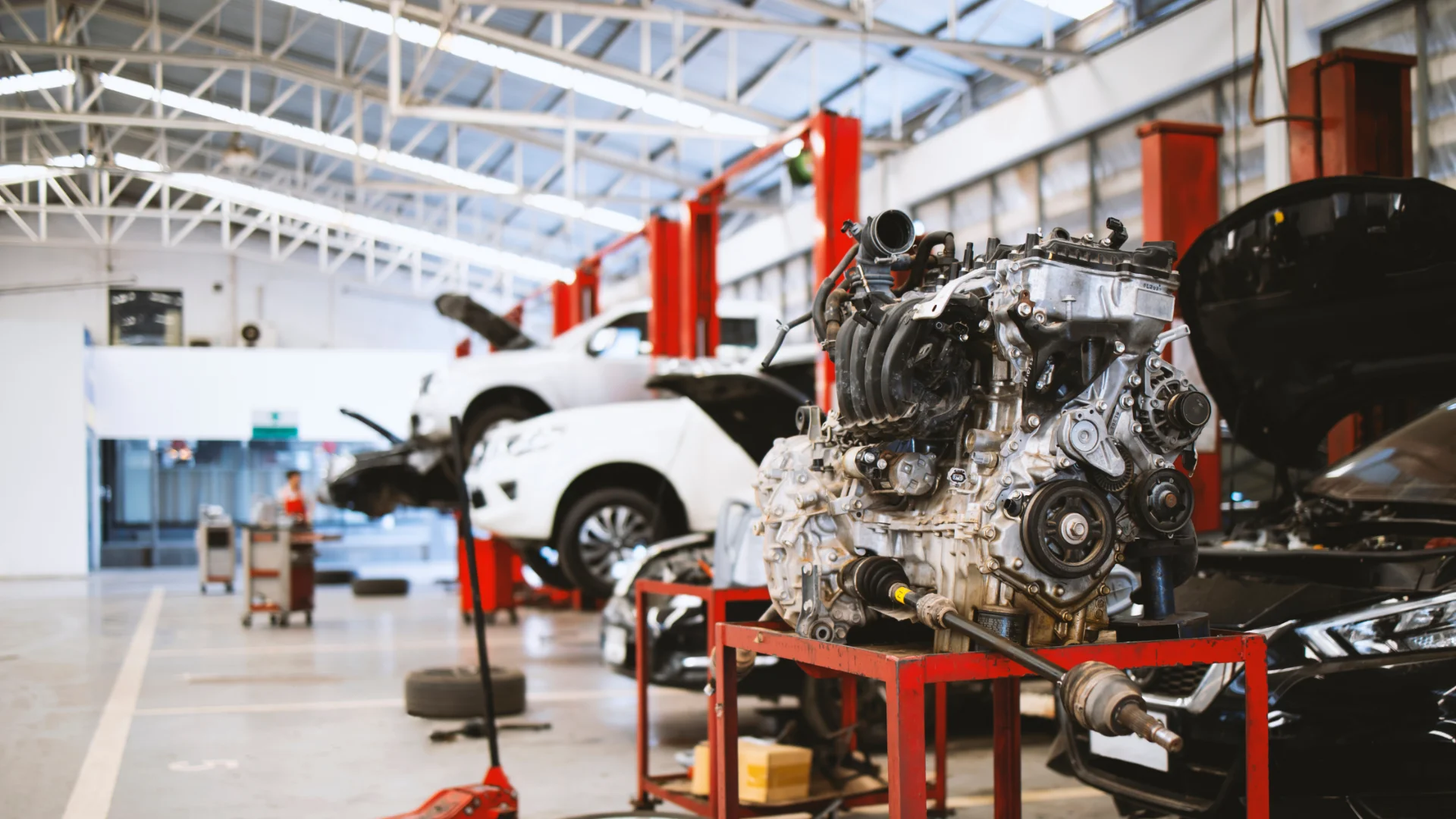
AI Platform Implementation: What Dealers Must Know in 2025
Table of Contents
AI Platform Implementation: What Dealers Must Know in 2025
Introduction: The Tipping Point for Dealerships
If you’re running or managing a dealership in 2025, chances are you’ve already felt the winds of change. Customers no longer walk in uninformed; they arrive having browsed dozens of online listings, compared prices, and watched YouTube reviews. Their expectations are sky-high, and their patience is razor-thin. In this environment, artificial intelligence (AI) isn’t just a buzzword it’s the difference between staying relevant and slowly fading into the background.
The automotive industry is undergoing its most significant transformation since the mass adoption of online sales. AI platforms now power everything from marketing and inventory management to customer engagement and service diagnostics. And yet, many dealerships still hesitate, worrying about complexity, cost, or cultural resistance.
But here’s the truth: AI isn’t about replacing the human side of car sales. It’s about augmenting it removing the inefficiencies, predicting what your customers want, and presenting vehicles in ways that actually capture attention. A prime example is how AI is revolutionizing car photo workflows, turning once tedious editing processes into seamless, automated tasks (AI car imaging workflow revolution).
In this blog, we’ll dive deep into what dealers must know about AI platform implementation by 2025 not just the technologies themselves, but the cultural, operational, and ethical shifts that accompany them.
Customer Experience Is King
Understanding Customer Preferences with AI
Let’s be honest customers are complicated. They say they want one thing, but their browsing behavior often reveals something else. By 2025, AI-driven analytics have become sophisticated enough to track not just search queries but also micro-behaviors how long someone lingers on an SUV vs. a compact car, which trim levels spark the most engagement, even what time of day they tend to shop.
Imagine a customer who has been browsing your site for weeks, always landing on hybrid SUVs but never filling out a lead form. An AI system can connect those dots and send a personalized recommendation or even highlight the exact trim package they’re likely to choose. Instead of chasing leads blindly, you meet customers where they are with uncanny precision.
Streamlining Customer Interactions
The idea of chatbots used to make dealers nervous. “Won’t that make us sound robotic?” was a common fear. But the reality turned out to be the opposite. AI-powered virtual assistants don’t replace people; they cover the gaps. They answer at 2 a.m. when no salesperson is available. They pre-qualify leads by asking smart questions. And they hand off conversations seamlessly to a human when the deal gets serious.
I’ve seen dealerships double their lead response rates simply by letting AI handle the first layer of interaction. Customers love it not because they’re talking to a robot, but because they’re finally getting instant attention.
Optimizing Operations with AI
Predictive Analytics for Inventory Management

Inventory has always been the tightrope act of dealerships. Order too many of the wrong models, and you’re sitting on depreciating assets. Order too few of the right ones, and customers walk away frustrated.
AI platforms change this equation. By analyzing historical sales, local economic data, and even social media trends, AI can forecast which vehicles will be in demand three to six months from now. Instead of staring at rows of unsold sedans, you’ll know that hybrids with advanced infotainment packages are about to trend.
This predictive power doesn’t just save money it builds confidence. Dealers can finally answer the age-old question, “What should we order next?” with data-backed certainty. For example, AI can even streamline how quickly fresh inventory makes it online, ensuring every new arrival gets listed with professional-quality visuals thanks to innovations like the AI transforms car imaging workflow: upload to listing.
Enhancing Maintenance Services with AI
Service bays are another overlooked frontier for AI. Today’s diagnostic tools don’t just identify problems they predict them. AI can flag a battery that’s likely to fail within 60 days, or brakes that will need replacement before the customer even notices.
Dealers who adopt these systems turn routine maintenance into proactive customer care. Imagine calling a client to say, “We noticed your vehicle will likely need a tire rotation soon. Want to schedule it before your road trip?” That level of foresight doesn’t just earn revenue it earns loyalty.
Legal and Ethical Considerations
Data Privacy and Protection
AI thrives on data, and dealerships sit on mountains of it financing details, contact information, browsing behavior, even driving habits. With great data comes great responsibility. Customers are savvier than ever about privacy, and governments are catching up with strict data protection laws.
Dealers must treat customer data not as a commodity but as a trust. That means transparent policies, secure storage, and compliance with frameworks like GDPR or emerging regional equivalents. Breaches or misuse don’t just result in finesmthey damage reputation, often irreparably.
Ethical AI Use
Bias is another concern. If an AI system consistently recommends certain financing options or filters out leads based on flawed assumptions, the damage can be significant. By 2025, “explainable AI” is the standard, not the exception. Dealers must be able to show how AI reached a decision whether it’s recommending a vehicle, pre-qualifying a loan, or setting a service price.
The dealerships that thrive will be those that treat AI as a transparent partner, not a black box.
Training and Change Management
Preparing Your Team for AI
Technology adoption often fails not because the tech is bad, but because the people using it never fully buy in. Rolling out an AI platform requires more than a software install it requires a cultural shift.
Staff need to be trained not just on “how to use” a system, but on how it benefits them personally. A salesperson who sees AI as a threat will resist it. A salesperson who sees it as a time-saver that helps them close more deals will embrace it.
Managing Technological Change
Change is disruptive by nature. Dealers who succeed create a roadmap: clear communication, phased rollouts, and ongoing feedback. They invite staff into the process, rather than imposing it top-down. When done right, AI doesn’t feel like a burden it feels like a new superpower.
Creative and Emerging Applications of AI

Beyond the Basics: AI for Car Customization
One of the most exciting applications of AI is in vehicle visualization. Customers today don’t just want to read specs they want to see their dream car. AI-powered modification tools now let buyers experiment with colors, trims, and accessories in real-time.
Instead of staring at a brochure, they can design their perfect vehicle on a tablet in your showroom. That’s not just engaging it’s persuasive. When a customer has already “built” their dream car virtually, saying yes in real life is a natural next step.
Dealers are beginning to integrate tools like these, bridging the line between service and entertainment. A notable example is highlighted in AI car modification online: design your dream car.
The Dealer of 2025 – A Vision
Picture walking into a forward-thinking dealership in 2025. The lobby greets you with AI-powered kiosks that instantly recognize your appointment and pull up your browsing history. A virtual assistant checks you in while a salesperson armed with AI insights already knows your financing comfort zone and the three vehicles you’re most likely to test drive.
In the service bay, predictive diagnostics ensure your car gets what it needs before problems arise. In the photo studio, AI has already transformed a fresh arrival into a polished, ready-to-list showcase. And when you explore customization options, an AI engine lets you tweak, design, and personalize your future ride in real-time.
The technology is seamless, almost invisible but the human connection remains front and center. That’s the real power of AI: freeing humans to do what only humans can do connect, persuade, and build trust.
Conclusion: Thriving, Not Just Surviving
AI isn’t coming it’s here. The question for dealerships in 2025 isn’t whether to adopt AI, but how. The winners will be those who embrace it fully: respecting data privacy, training their teams, and using AI not as a crutch but as a catalyst.
For many, the first step is simple start with something tangible, like AI-enabled car photo editing. It’s a gateway technology that delivers instant value, transforming tedious workflows into professional, engaging outputs. From there, the journey into predictive analytics, virtual assistants, and customization tools feels less intimidating.
Dealerships that lean into this transformation will discover something profound: AI doesn’t replace the dealership it redefines it for a new era.
Frequently Asked Questions (FAQ)
1. Why should dealerships invest in AI platforms in 2025?
The automotive retail environment has changed dramatically in just a few years. Customers are no longer passive they research online, compare dozens of options, and often know more about a vehicle’s specs than the salesperson they meet. In this new landscape, AI platforms give dealerships a vital edge.
By adopting AI, dealerships can finally stop playing catch-up and start anticipating customer needs. These platforms enable smarter sales strategies, faster lead responses, and more accurate predictions about what vehicles will sell best in a given market. It’s not just about efficiency it’s about survival. Dealerships that wait too long to adapt will face declining margins, slower sales cycles, and a customer base that drifts toward competitors who do offer intelligent, personalized experiences.
In short, AI in 2025 is not optional. It’s the backbone of a dealership’s ability to thrive in a market where digital transformation is no longer a trend it’s the norm.

2. How does AI improve the car photo and listing process?
One of the most overlooked but critical parts of selling cars today is imagery. A potential buyer spends just a few seconds deciding whether to click on a listing or keep scrolling. In that tiny window, the quality of the car photo makes all the difference.
Traditionally, preparing photos for listings was manual, inconsistent, and time-consuming. Backgrounds needed to be edited, lighting fixed, license plates blurred all before the image even reached a marketplace. AI has completely flipped this process. Modern AI-driven imaging tools automatically edit photos, remove distractions, and even optimize for marketplace algorithms. What used to take hours of editing can now be done in minutes, producing professional, uniform visuals that make cars stand out.
Dealerships using these tools not only save time but also project a stronger, more trustworthy image to customers. As explained in the AI transforms car imaging workflow: upload to listing, the result is faster turnaround from upload to listing, higher engagement rates, and ultimately, faster sales.
3. Can AI really predict customer preferences and buying behavior?
Yes and it’s far more powerful than guesswork or gut feeling. AI platforms in 2025 leverage customer browsing behavior, past purchases, demographic information, and even regional market trends to create a holistic picture of what a buyer is likely to want.
Imagine a customer browsing your site late at night, clicking repeatedly on hybrid SUVs but never filling out a lead form. AI doesn’t just track that activity it learns from it. Over time, the system can predict that this customer is interested in fuel efficiency, mid-size vehicles, and potentially family-oriented features. The next time they visit, they could be shown a personalized landing page featuring exactly those options.
This level of personalization creates a “you know me” effect, where the customer feels understood without ever having to explain themselves. Instead of chasing cold leads, your sales team gets warmer, better-informed prospects. The result is not just more sales, but better customer experiences that build loyalty over time.
4. What role does AI play in vehicle maintenance and after-sales service?
Service operations have always been a major revenue driver for dealerships, but they’ve also been reactive. Customers bring in cars when something goes wrong, often frustrated and stressed. AI has transformed this dynamic by enabling predictive maintenance.
AI-powered diagnostics can analyze vehicle data in real time and forecast issues before they occur. For example, it might detect that a battery is trending toward failure within the next 30 days, or that brake wear suggests replacement is needed soon. Instead of waiting for a breakdown, your dealership can call the customer proactively: “We noticed your car will likely need new brake pads before your holiday trip would you like to schedule a quick service?”
This flips the service model from reactive to proactive. Customers feel taken care of, trust builds naturally, and loyalty increases. It also ensures service bays are used more efficiently, smoothing out demand instead of having spikes of emergencies. Dealers who adopt AI in their service operations don’t just earn more revenue they redefine what customer care looks like.
5. How can dealerships begin their AI journey without feeling overwhelmed?
The biggest mistake dealers make is trying to “do everything at once.” AI is a vast field, and rolling out a full platform across sales, service, marketing, and operations can feel intimidating. The smartest approach is to start small with something tangible, practical, and impactful.
For many dealerships, that first step is AI-powered car photo editing. It’s low-risk, easy to implement, and delivers immediate results: faster listings, better photos, and higher customer engagement. It’s the kind of quick win that builds internal confidence and shows staff that AI isn’t a threat it’s a helper. A great primer on this shift is the AI car imaging workflow revolution.
Once a dealership sees the benefits in one area, expanding becomes more natural. Next steps might include predictive analytics for inventory, AI chatbots for lead response, or even customer-facing car customization tools (like those explained in AI car modification online: design your dream car).
The key is momentum: start with one area, prove the value, and then scale. By 2025, the dealerships that thrive are those that view AI not as a single project, but as an ongoing journey of improvement.
